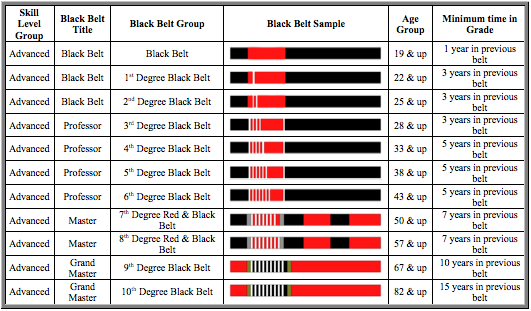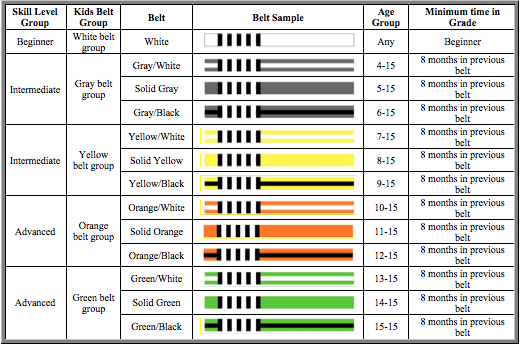Have you ever wondered why Brazilian Jiu-Jitsu practitioners wear different-colored belts? The BJJ belt system can be a bit of a mystery to newcomers, but it plays a crucial role in every practitioner’s journey.
Each belt represents a significant milestone in a student’s growth, both on and off the mat. Understanding these ranks is essential for anyone involved in BJJ, as it provides a clear roadmap for personal development and achievement.
This article will guide you through the different belt ranks for adults in BJJ, from the beginner white belt to the prestigious red belt, explaining what each rank means and what it takes to progress through the system.
Understanding the Belt System in Brazilian Jiu-Jitsu

The Brazilian jiu-jitsu belt system is a structured way to recognize the progress of practitioners.
It was developed to ensure students have a clear path to follow, encouraging consistent improvement.
Each belt color represents a different stage in a student’s journey, with specific skills and knowledge required to advance.
The progression through the belts not only signifies technical proficiency but also personal growth, discipline, and dedication.
This system helps maintain a high standard within the BJJ community, ensuring that each belt holder has earned their rank through hard work and perseverance.
The Different Brazilian Jiu-Jitsu Belts for Adults

White Belt: The Beginning of the Journey

The white belt is the starting point for all BJJ practitioners.
At this stage, students are introduced to the basics of BJJ, including fundamental techniques like escapes, submissions, and positional control.
White belts spend their time learning how to move efficiently on the ground and how to apply essential submissions safely.
This phase is about building a solid foundation and understanding the core principles of BJJ.
White belts often face challenges such as not understanding techniques flow and dealing with more experienced training partners.
So, patience and consistent practice are vital to progressing to the next level.
Blue Belt: Building a Strong Foundation

Achieving the blue belt is a significant milestone in Brazilian Jiu-Jitsu. It typically takes about two to three years of consistent training.
At this level, practitioners have a solid grasp of basic techniques and start to develop their game.
A blue belt practitioner works on refining their skills, learning more advanced techniques, and beginning to understand strategy and timing. This rank is about building a solid foundation and expanding one’s technical repertoire.
Blue belts may face the challenge of feeling overwhelmed by the sheer volume of techniques to learn.
However, this phase is crucial for solidifying skills and preparing for more advanced training.
Purple Belt: Refinement and Strategy

The purple belt is often considered the beginning of advanced BJJ. At this stage, practitioners have a deep understanding of techniques and start to develop their unique style.
Purple belts focus on refining their skills, learning advanced strategies, and becoming proficient in all positions. This rank is also about understanding the nuances of technique and strategy, making it a critical phase for developing a complete game.
Purple belts often take on mentoring roles, helping lower belts improve their skills. This stage combines technical knowledge with strategic thinking, setting the stage for mastery at higher belts.
Brown Belt: Mastery and Preparation

The brown belt represents a high level of proficiency in BJJ. Practitioners at this stage are skilled technicians and strategists who focus on perfecting their techniques and preparing for the black belt.
Brown belts polish their skills, correct weaknesses, and develop their teaching abilities. They often take on leadership roles within the academy, helping to guide and mentor lower belts.
This rank is about fine-tuning one’s game and ensuring that all aspects of BJJ are well-rounded. Brown belts are seen as senior students, ready to transition to the highest rank of black belt.
Black Belt: The Pinnacle of BJJ Expertise

Achieving the black belt in BJJ is a remarkable accomplishment that signifies a high level of expertise.
Black belts are not only skilled practitioners but also ambassadors of the art. They are expected to continuously learn and contribute to the BJJ community through teaching and mentorship.
A black belt often competes at the highest levels and is involved in developing new techniques and strategies.
The journey doesn’t end at the black belt; it marks the beginning of a lifelong commitment to mastery and teaching. Black belts also earn degrees over time, reflecting their dedication and contributions.
Coral Belt: A Mark of Seniority and Influence

The coral belt, a combination of black and red, is awarded to practitioners who have reached the 7th and 8th-degree black belt levels.
This belt signifies a lifetime of dedication to BJJ, highlighting technical expertise and significant contributions to the art.
Coral belt holders are revered for their deep knowledge, teaching abilities, and influence within the BJJ community. They often play pivotal roles in developing and promoting BJJ worldwide, mentoring future generations, and preserving the integrity of the martial arts.
The coral belt symbolizes seniority and respect, representing decades of commitment and excellence.
Red Belt: The Ultimate Rank

The red belt is the highest rank in BJJ, reserved for those who have dedicated their lives to the art. It is scarce and often awarded to practitioners who have significantly contributed to BJJ over many decades.
Red belts are seen as the keepers of the art, embodying its highest principles and values. They have unparalleled knowledge and are respected for their wisdom and experience.
The red belt is not just about technical skill; it represents a lifetime of dedication, teaching, and promoting the values of BJJ. They leave a lasting legacy in the BJJ community.
The Different Brazilian Jiu-Jitsu Belts for Kids

In Brazilian Jiu-Jitsu, children and teenagers have a different belt progression than adults. It ensures that younger practitioners develop a solid foundation and grow their skills progressively.
The belts for kids include:
- White,
- Gray (with white, solid, and black stripes),
- Yellow (with white, solid, and black stripes),
- Orange (with white, solid, and black stripes),
- Green (with white, solid, and black stripes).

Each belt represents a stage of development, focusing on fundamental techniques, discipline, and the values of respect and perseverance.
The transition from youth belts to the adult system usually begins around 16, when practitioners may be awarded a blue belt based on their skill level and commitment.
Factors Influencing Belt Promotion in BJJ

Several factors influence belts promotion in Brazilia Jiu-Jitsu, including:
- Time on the mat,
- technical proficiency,
- Competition experience,
- Contributions to the academy.
- Etc.
Consistent training and dedication are essential for progression. Instructors look for a deep understanding of techniques and the ability to apply them effectively.
Participation in competitions can also demonstrate a practitioner’s skills under pressure.
Additionally, it is essential to help others learn and grow, show leadership qualities, and contribute to the positive atmosphere of the academy.
Belt promotions are not solely based on technical skills but also personal growth and contribution to the BJJ community.
Common Myths and Misconceptions about BJJ Belt Ranks

Several myths and misconceptions exist about the BJJ belt system.
One common myth is that belt promotions are solely based on time. In reality, promotions are based on time, skill, and contribution.
Another misconception is that achieving a black belt means the end of learning. But, in this grappling sport, learning never stops; even black belts continue to grow and evolve.
Some believe that competition success is the only path to promotion, but personal progress and dedication in the gym are equally important.
Understanding these misconceptions helps set realistic expectations for one’s BJJ journey.
See also: The Ultimate Guide to Jiu-Jitsu Training Equipment
Conclusion
The journey through the BJJ belt ranks is a rewarding and challenging experience. Each belt represents a different stage of growth, both technically and personally.
From the initial excitement and challenges of the white belt to the prestigious honor of the red belt, every rank has significance and unique lessons.
The belt system measures technical proficiency and reflects one’s dedication, perseverance, and contribution to the BJJ community.
Embrace the journey, stay committed, and remember that the path to mastery is continuous. BJJ is not just about belts; it’s about personal growth and the relationships built along the way.



